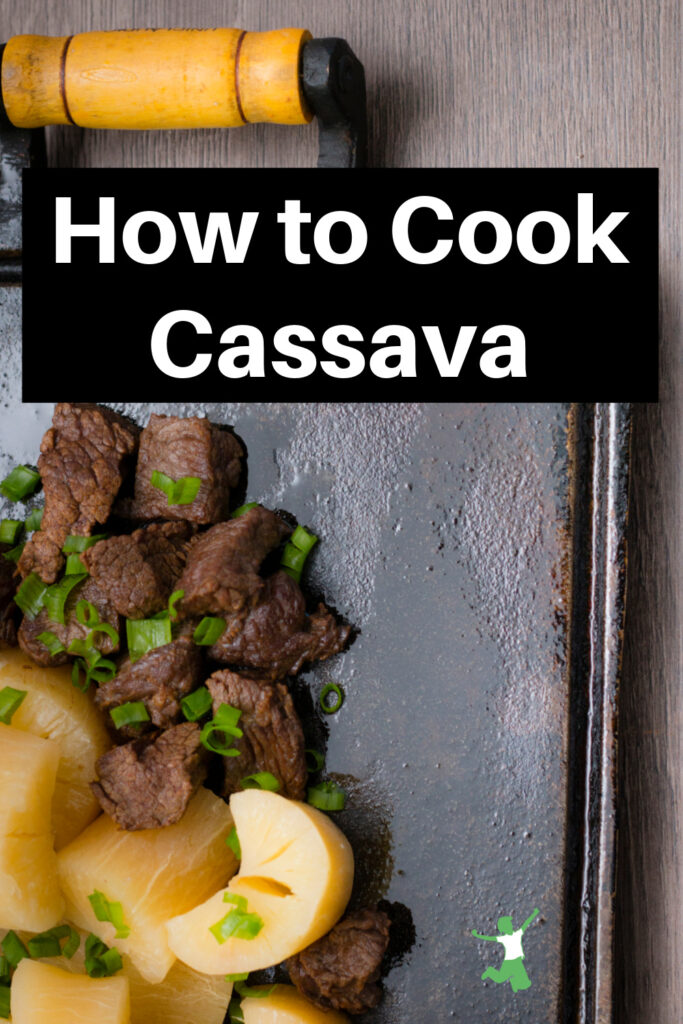Table of Contents[Hide][Show]
How to prepare and cook cassava to remove phytic acid and toxins to safely enjoy this important staple crop from around the world.

When you find a good source of cassava root from a local farm or by growing and harvesting cassava root yourself, the next step is to prepare it properly for safe eating.
Cooking Cassava
The process is simple, but very important!
Cassava has a large amount of antinutrients and toxins that need to be eliminated during preparation.
You can never ever eat cassava raw!
In this way, it is much like elderberries which also should not be consumed raw or otherwise undercooked.
Once prepared properly, cassava is a delicious grain-free option with a myriad of uses in the kitchen. (1)
Here are the basic steps with a video demonstration of the process.
Clean and Peel
Once you’ve cut off the starchy root bulbs from the rest of the cassava plant, you must thoroughly prepare them before eating.
The first step is to clean and peel the roots so that every bit of the woody exterior and skin is removed.
The remainder is the white starchy root that will be consumed.
Cook Thoroughly … Boiling is Best
The starchy root must then be cooked thoroughly to deactivate a large amount of phytic acid as well as all traces of any remaining cyanogenic glucoside toxins. (2)
Boiling in filtered water until very soft is the method I prefer to accomplish this.
Of course, the cooking water must be discarded at the end.
You may wish to chop the cassava and roast it instead.
If you do choose to bake in the oven instead of boiling, you should soak the root for 24 hours and rinse thoroughly beforehand as an extra precaution.
What does cooked cassava root taste like? To me, the flavor and texture is strongly reminiscent of parsnip.
What about Cassava Flour?
I’ve used cassava flour for baking for years to make recipes such as grain-free cassava waffles. It would be exciting to use my own homemade flour for these dishes!
However, after doing some initial research, I learned that making cassava flour yourself from the root is A LOT of work.
Basically, to ensure the cassava flour is safe to consume, you have to dehydrate the root after fully cooking it followed by grinding it into flour.
Other methods suggested online are a bit sketchy as they don’t involve cooking the root first. That is a recipe for making yourself sick. (3)
At some point in the future, I may attempt this task.
For now, I am enjoying the fruits of my labor simply by peeling, boiling, and eating cassava root with butter and my favorite sea salt (most highly mineralized on the planet and tested for purity).
The taste and texture are strongly reminiscent of parsnip to my taste buds.
Summary
It is critical to note that although cassava is a popular food eaten all around the world (it is the ninth global staple crop), it contains harmful substances in its raw state. (4)
Never ever eat cassava in any form when it is uncooked or undercooked.
In order to safely consume it, the woody exterior and skin must be removed. Then, the root is thoroughly boiled until soft before consuming.
The water used for boiling should be tossed and never reused.
In addition, I do not recommend composting the woody peelings from a cassava harvest.
When cooked correctly, cassava is a great source of energy calorie for calorie…far greater than even potatoes…and is a delicious and safe ancestral food.

(1, 2) Cassava: A Versatile and Satisfying Grain-Free Option
(3) Outbreak of Cyanide Poisoning Caused by Consumption of Cassava Flour
(4) Cassava Post-harvest Operations








Leave a Reply